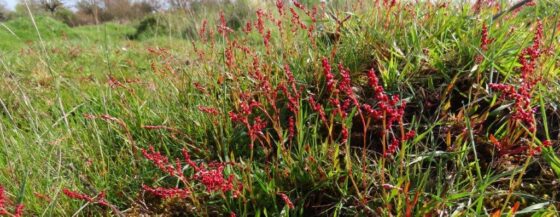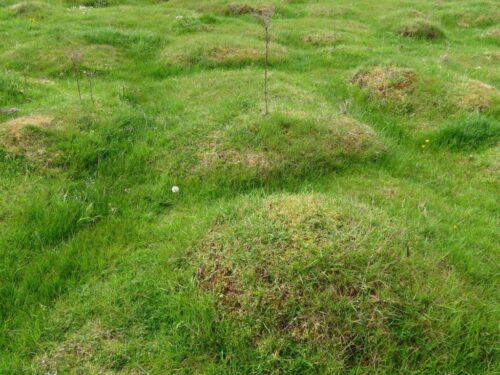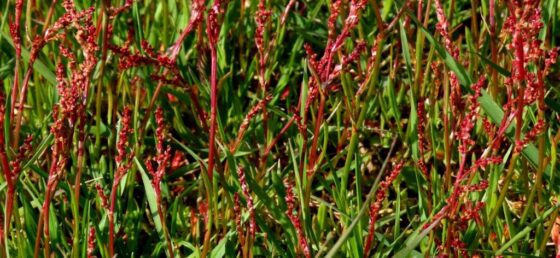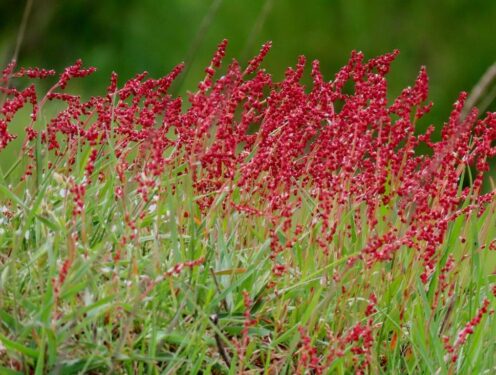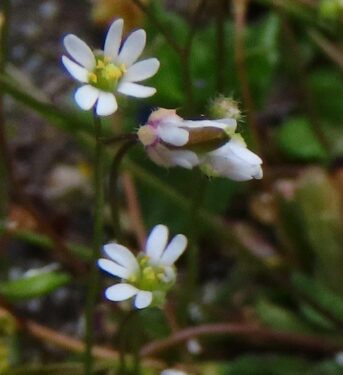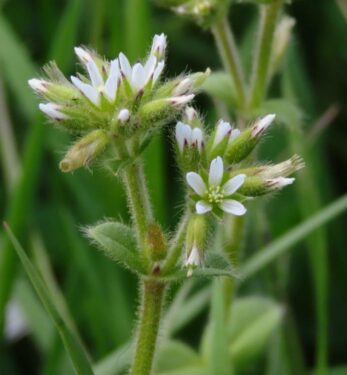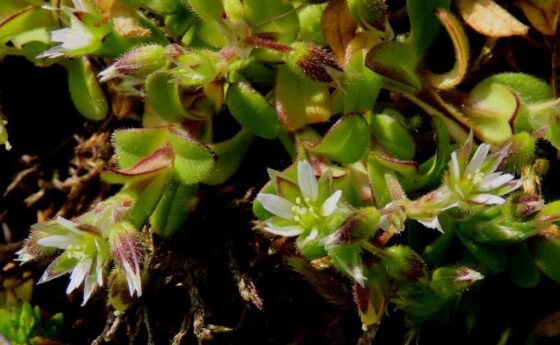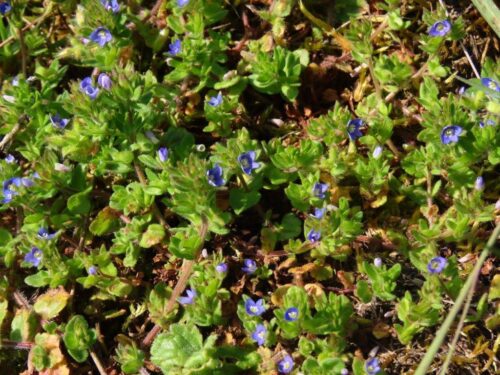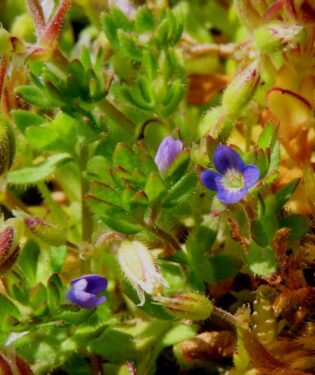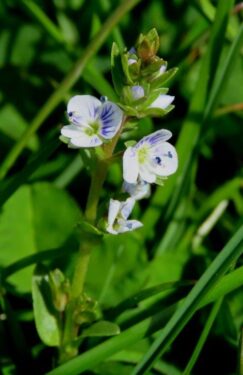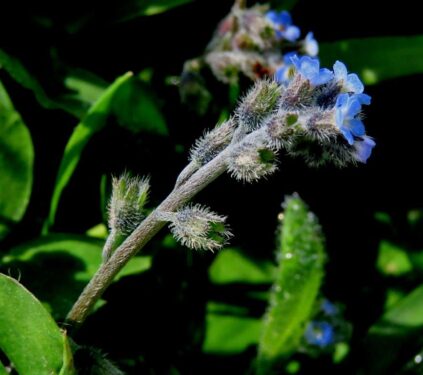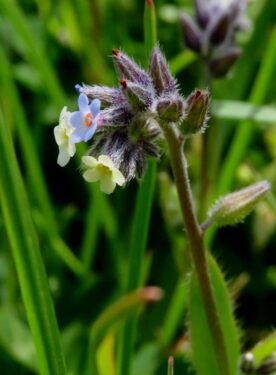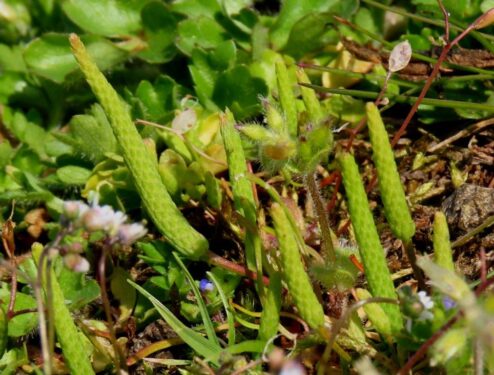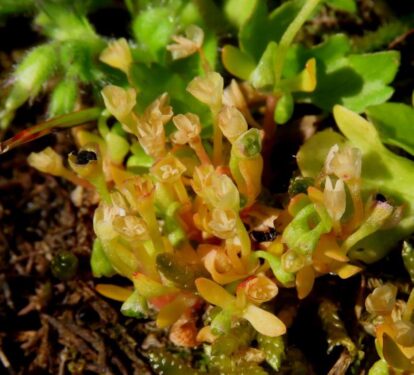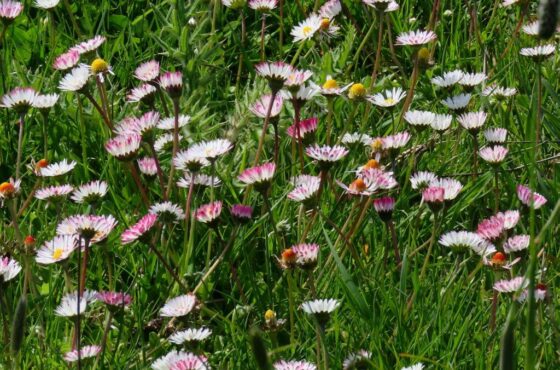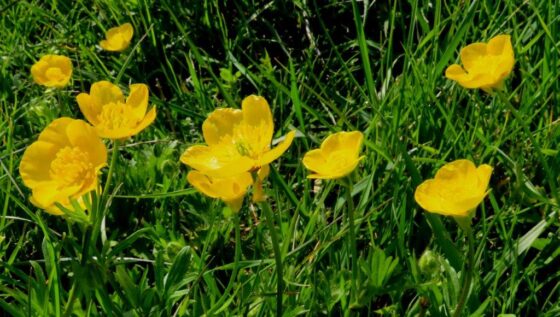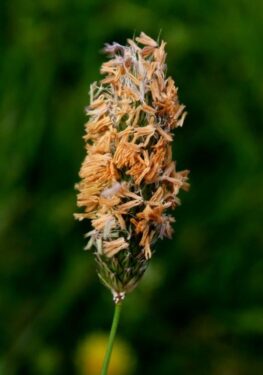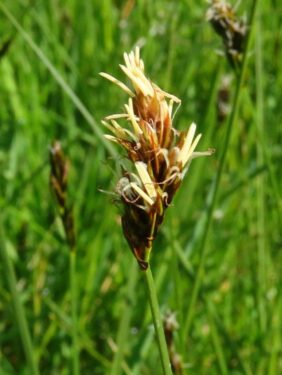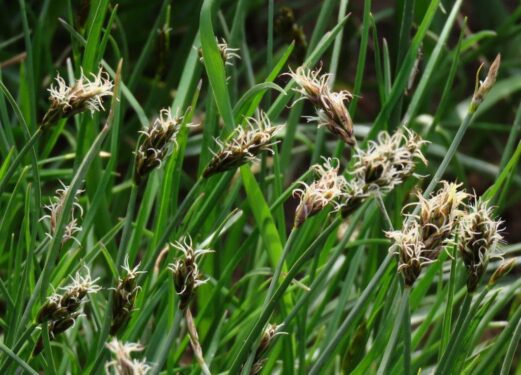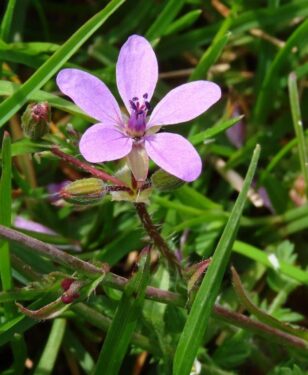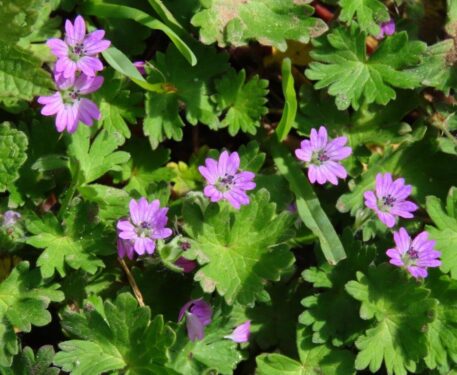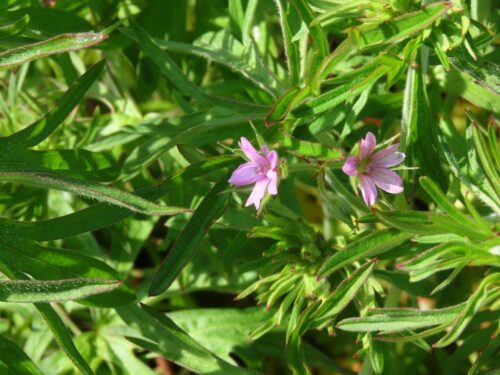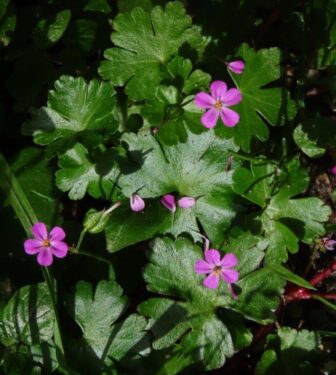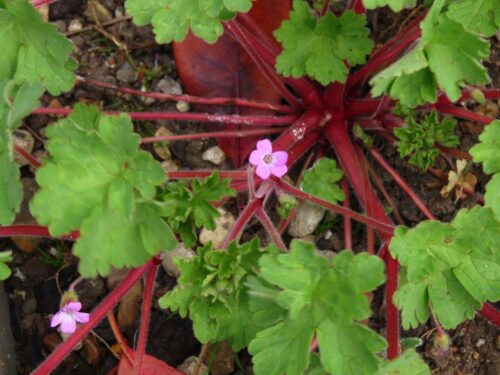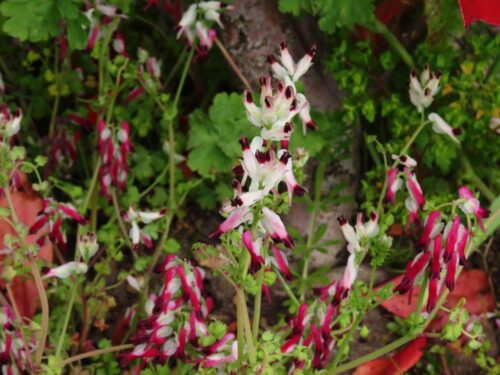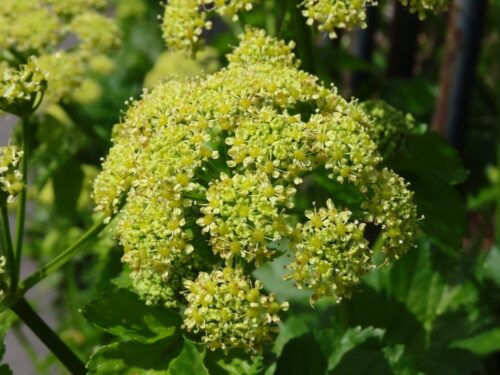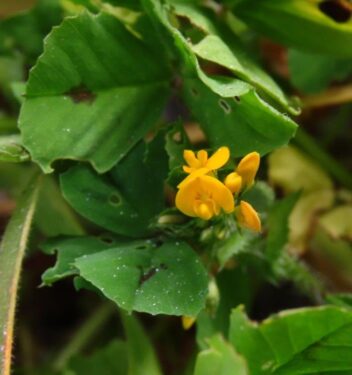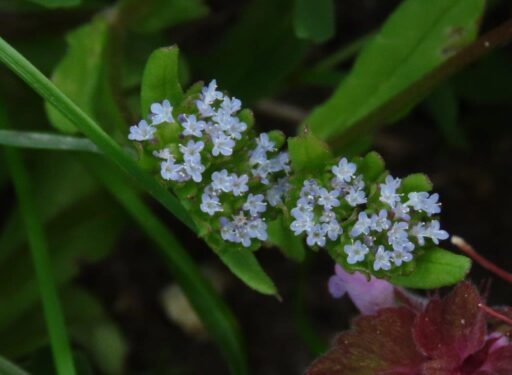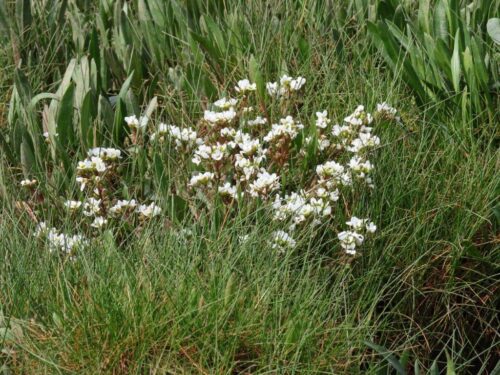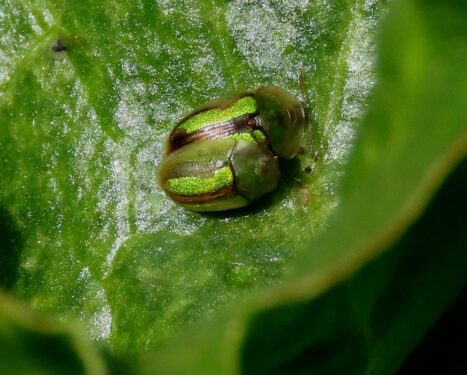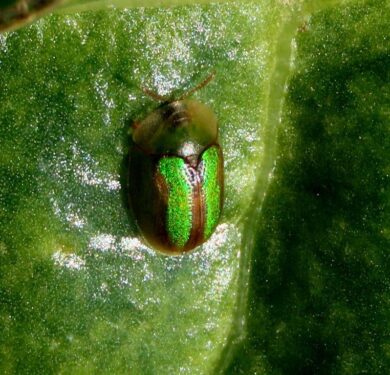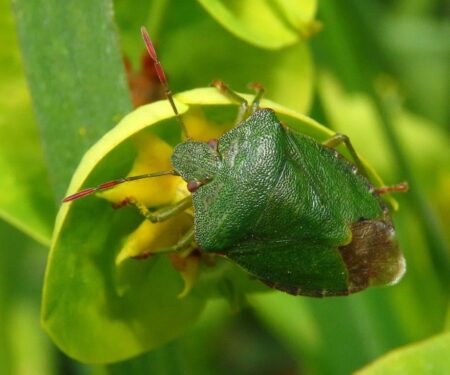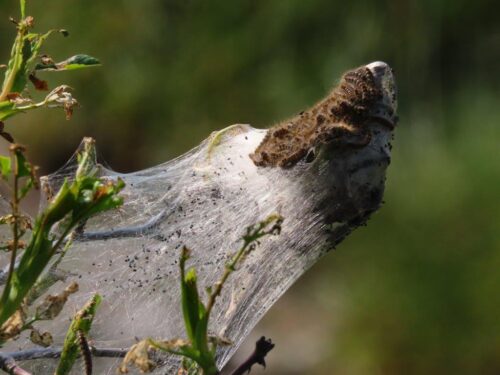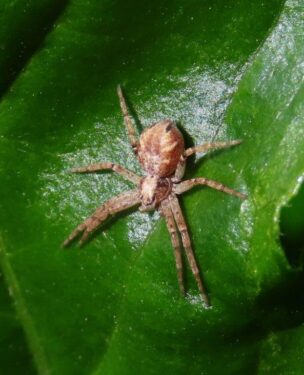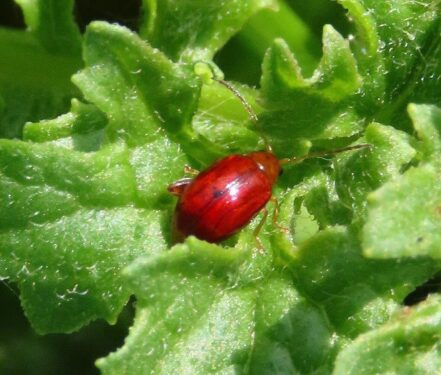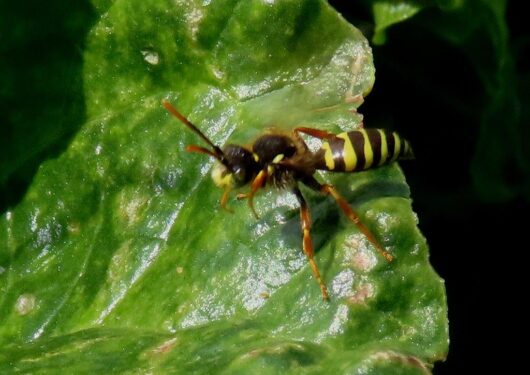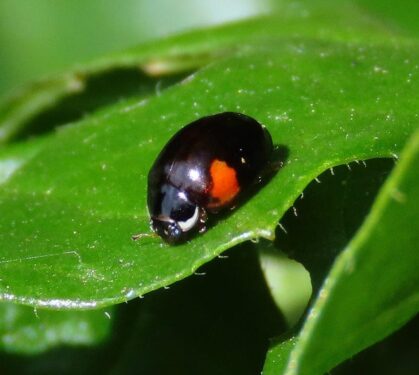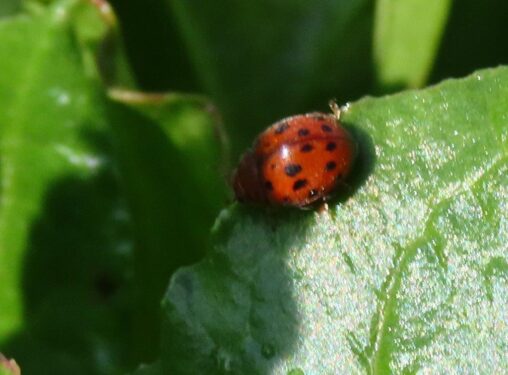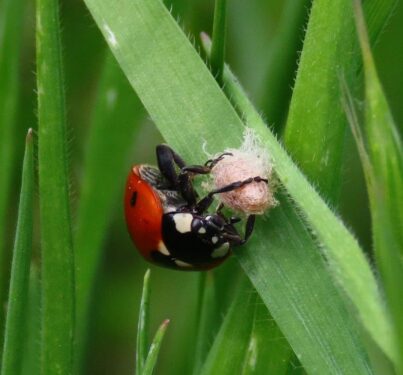We have visited Barrier Marsh many times on our walks, and always marvelled at the number of ant-hills covering it in low, grassy hummocks. Indeed we have blogged about the ant-hills before, most notably here, right at the start of the pandemic.
Each hill is different, a microhabitat of heathland amidst the marshy matrix, and they also change markedly as Spring develops. This time last week, the hills were just starting to redden under the influence of Sheep’s Sorrel; today, its red glow was spreading widely…
Many of the hills were picked out in white with the last flowers of Common Whitlow-grass, really a March speciality though somewhat delayed by our tardy spring, and by the newly emerged Sticky Mouse-ears, and on just one hill we found, Small Mouse-ear.
Blue was added to the palette by copious amounts of Wall Speedwell and a little Thyme-leaved Speedwell…
…while Early Forget-me-not, in many years a real feature of the dry ant-hills was restricted to patches on the sea wall, perhaps a reflection of our wet Spring. But is was a delight to see its close relative Changing Forget-me-not on again just a few hills, a species we have not noticed previously here although it is abundant on the sandy peaks around Cockaynes reserve.
Much less obvious, but only on one hill each so far as we could find was Mousetail (the same hill on which we found it a couple of years ago), also known in one place from cattle-poached ditch-sides on the marsh itself…
…. and so insignificant we couldn’t re-find it today, one small plant of Blinks. Again, this was a new record from the marsh as far as we are concerned, although common on the open sand heaths of Cockaynes.
All of these were of course set amidst the wider damp grassland, with Daisy and Bulbous Buttercup, Meadow Foxtail grass just coming into flower, and whole swathes of the nationally-scarce Divided Sedge.
Away from the marsh, on the sea wall and the Wivenhoe Waterfront a whole new set of plants are now belatedly coming in to flower. Several are ‘little pink jobs’ , perhaps confusing initially, but each with distinct foliage or floral features: Common Stork’s-bill, and Dove’s-foot, Cut-leaved, Round-leaved and Shining Crane’s-bills.
White Ramping Fumitory and Alexanders are starting to fade, whilst Spotted Medick and Cornsalad are just emerging, with English Scurvygrass out on the saltmarsh, the start of flowering in that habitat, something that will support a changing floral mix right through until autumn.
Our walks were accompanied by the sound of singing Cuckoos, Cetti’s Warblers and Whitethroats, but sadly insects were few and far-between. However, the first Small Copper and Orange Tip of our spring signalled that season is unfolding, and on the sea wall Sea Beet, our favourite Neon-striped Tortoise-beetles have emerged a good couple of weeks earlier than in previous years.
Otherwise, a small but motley selection of invertebrates kept us searching and interested…
…. perhaps the highlight being a zombie ladybird, hiding and indeed protecting its nemesis, the parasitic wasp Dinocampus, that has been eating out its body contents but is now pupating under the paralysed body.
